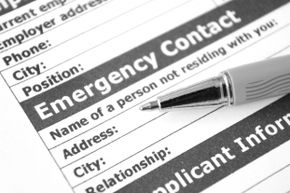Knowing there are 136.3 million people in the U.S. who visit an emergency department every year might scare you off from your own trip there [source: CDC]. That's a lot of people. Wait times for care can be so long that it's easy to start thinking that the best way to get through a trip to the ER is to avoid going in the first place. Well, yes and no. If you're having severe chest pains, for instance, don't self-diagnose it as gastroesophageal reflux disease (GERD) when it could be a heart attack. But, on the other hand, if something like a wait time is enough to keep you away, maybe your medical emergency isn't really a true emergency. If you know what a medical emergency is and what it isn't, you can save both time and money by relying more on your doctor, urgent care centers or retail health clinics to treat your problem. Save the ER for when life or limb is in jeopardy.
While emergency care is intended for people in life-threatening medical circumstances, as many as half of the people visiting the ER aren't actually there for life-threatening problems [source: Cunningham]. Care is focused on treating patients who have the most severe or dangerous symptoms such as severe pain, severe vomiting, difficult breathing, severed limbs or appendicitis. So if you find yourself heading to the ER — either as a patient, a parent or a health buddy (we'll talk about that later) — expect that others may be in more critical condition than you, take a deep breath and prepare for the best.
Advertisement










